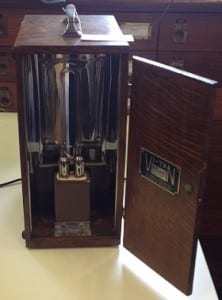Bentham the feminist?
By Nick J Booth, on 3 March 2016
Recently I was helping an artist, Kristina Clackson Bonnington, with some research into the collections I look after. Kristina is working on an event for this year’s International Women’s Day, and is starting to plan for the centenary of women getting the vote in the UK (2018). While discussing her project I thought it would be interesting to see what Jeremy Bentham’s thoughts on women’s rights were. I’m very pleased to say that he had some modern sounding ideas…
As with all my questions relating to Bentham’s life and works my first port of call was the friendly people at the Bentham Project. Their initiative ‘Transcribe Bentham’ is working to publish all of Bentham’s manuscripts and is finding now information all the time. One recent manuscript they sent me is pictured below, and rather wonderfully shows Bentham arguing for the use of gender neutral pronouns.
When both sexes are meant to be intended, employ
not the word man– but the word person
26 When both sexes intended employ person not man
Let it be understood that when the word person is
thus employed he the pronoun masculine includes the female
sex as well as the male (more…)
 Close
Close







